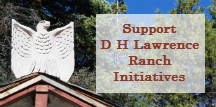Spring Intersession 2012 Course Descriptions
224.001: Introduction to Creative Writing
5/14/12-5/1912; 9:00-4:30; Rio Rancho Campus
Diane Thiel
This intersession course offers a fun and challenging way to complete the introductory creative writing course before next semester. It will be an intensive course, providing a foundation of techniques in writing fiction, poetry and nonfiction, and even some discussion of drama as well, particularly in terms of trying different forms for a chosen subject matter. The course will include a number of exercises in each genre and will provide an introduction to workshop methods. Readings of fiction, poetry, nonfiction, and some drama by authors of various backgrounds will enrich discussions about culture, form, and subject matter. Portfolios of about 20-25 pages will contain responses to exercises, one longer, more-developed piece, and revisions of exercises.
English 304.001: The Bible as Literature
05/21/12-05/24/12 and 05/29/12-05/31/12; 10:00-4:30
Anita Obermeier
The Bible is the text with the most significant influence on western literature. This non-doctrinal examination of the Bible is an invaluable tool for students of literature and will increase their cultural literacy. We will read the Bible like a literary anthology, aiming to familiarize the students with the major parts of the Hebrew and Christian Scriptures and to become conversant in the most influential stories, myths, and images from the Judeo-Christian tradition. We will study the Biblical texts as we would study other literature, emphasizing authorship, character, plot, setting, theme, literary modes and genres–including allegories, apocalyptic literature, beatitudes, blessings, etiologies, folktales, genealogies, historical narratives, laments, laws, legal commentary, letters, parables, prayers, prophetic poetry, proverbial wisdom, royal decrees, sayings, stories of healing, theophanies, and tribal lists–as well as use literary analysis, methods of inquiry, and terminology, such as allegory, irony, metaphor, parallelism, personification, puns, simile, symbolism, and gender. Our discussions will concentrate not only on the structure and meaning of individual works but also on the ways in which these works reflect the historical people and times that produced them.






